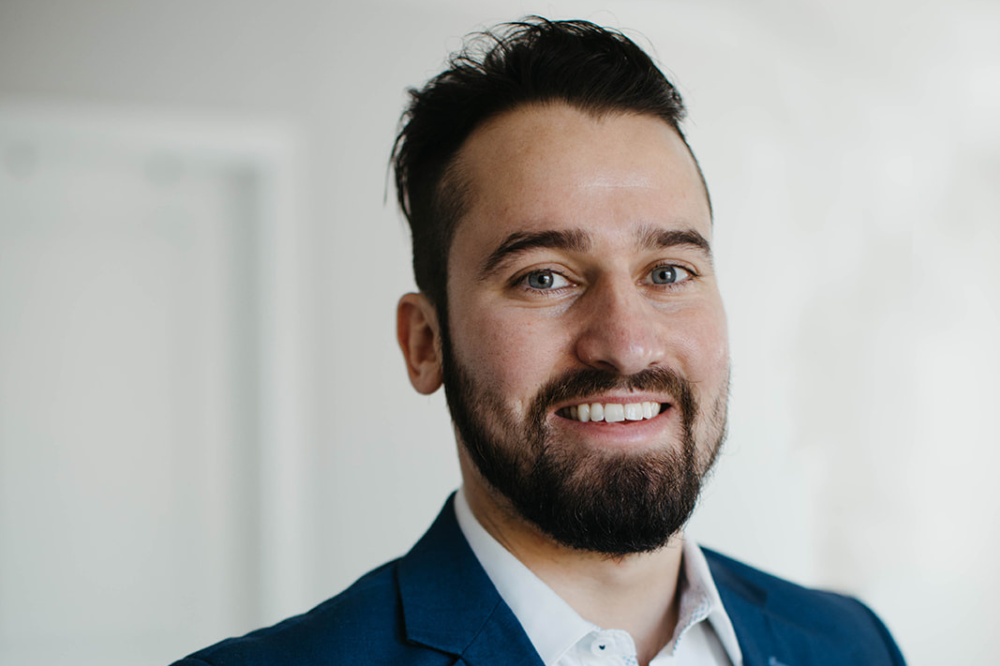SUM Insurance orders up new hospitality program

SUM Insurance orders up new hospitality program | Insurance Business Canada
Commercial Solutions
SUM Insurance orders up new hospitality program
How do you define a “white tablecloth” establishment?
Commercial Solutions
By
Desmond Devoy
Desmond Devoy, of Insurance Business Canada, sat down with Dan Lopes, assistant vice president, commercial general liability at SUM Insurance to discuss its entry into hospitality.
What started as a class project has now become SUM Insurance’s newest offering for the hospitality insurance market.
Dan Lopes (pictured), assistant vice president, commercial general liability at SUM Insurance, was working on his final project for his Fellow Chartered Insurance Professional (FCIP) training in 2020.
He brought the idea of a casualty product catering to the hospitality industry and complimentary to SUM’s property offerings to the segment, to his boss, Jeff Somerville, and he appeared excited at the adapted hospitality insurance offering.
“This is going to turn into something,” Lopes remembered thinking. “I could just see that excitement in his eyes.”
Now, that offering has come into fruition this summer, with a new hospitality casualty insurance program that is more adaptive to the realities of the space than that of its competition
“This has been my baby,” said Lopes, though he added modestly that “we’re not reinventing the wheel but are delivering a product we believe is optimized to our target market.”
A different way to grade risk
The new policy will differentiate between “white tablecloth” restaurants and other establishments. “We’re grading a little bit differently. Our selection and pricing process is bespoke and, we believe, novel in Canada.
One way the new policy uses different grading is in the price of liquor.
Lopes gave the example of a bar that sells liquor at $20 a glass. Across the street, another bar sells liquor at $1 a glass. The latter bar “is selling more liquor at the end, even though it’s cheaper. So the revenue doesn’t always tell us about the exposure there,” Lopes said. “We are using more of a unit metric than revenue,” to tell the story.
Another differentiator is considering how much each seat generates in revenue annually. A “white tablecloth” restaurant, say, a fancy French restaurant, would generate more revenue per seat than a more modest mom-and-pop establishment. The French restaurant would go into the “white tablecloth” category of coverage, while mom and pop’s place qualifies for an offering appropriate to its risk characteristics” Lopes said.
This is an expansion for SUM into the hospitality sector.
“We do have a facility also that can look at smaller, more vanilla risks, and have substantial market share in property covers in the sector,” he said. “But there is still a need for casualty capacity servicing bars, taverns and restaurants.”
Between the classroom and the launch, Lopes and his SUM associates spoke with Restaurants Canada and a law firm which serves the restaurant industry and peers in the USA with a successful restaurant program. All sources “gave us some insights into industry trends and how to approach certain characteristics. We did get a lot of insight. I talked to a lot of producers and brokers to see a lot of this business and how to write for it. I definitely had a lot of intel and that is applied in our approach,” said Lopes.
Eyes in the kitchen
Insurance can cover almost anything, but restaurants and bars are an area of coverage that one is more likely to regularly interact with. When he goes out to eat now, Lopes still has one eye on his stomach, but his other eye is on restaurant infrastructure he may not have noticed before.
“You kind of have a separate set of eyes after you do all the research,” he said. “You look at things like staircases and railings and all of these things where you’ve seen claims develop from freak accidents. I always kind of look at it now and put my underwriting hat on.”
Lopes believes that site inspections are another important tool that SUM can utilize to properly assess the exposure at these venues. He has accompanied risk inspectors on tours of restaurants and other facilities.
“They’re the ones who write your reports,” he said. But as an “underwriter, going to see it is (an insured property) is very valuable.”
The infrastructure is one thing, but contemplating the servers, chefs, and other staff, is “one of the biggest exposures” as well. “That definitely goes into the underwriting guidelines and how we want to vet these guys. Training and manager experience is extremely important.”
The hospitality industry has traditionally had a high turnover of personnel but this has been exacerbated by so many people leaving the industry during and after the pandemic.
“If you get newer people who don’t have as much experience, that’s going to lead to potential claims,” he said. “It is something you have to be mindful for and it is definitely tough. A lot of people left during COVID in the industry and there are more newer people coming into it, which makes it that much more difficult for underwriters and brokers to gauge and assess liability exposure in this industry. And another reason to consider SUM Insurance is for future placements.”
Related Stories
Keep up with the latest news and events
Join our mailing list, it’s free!






